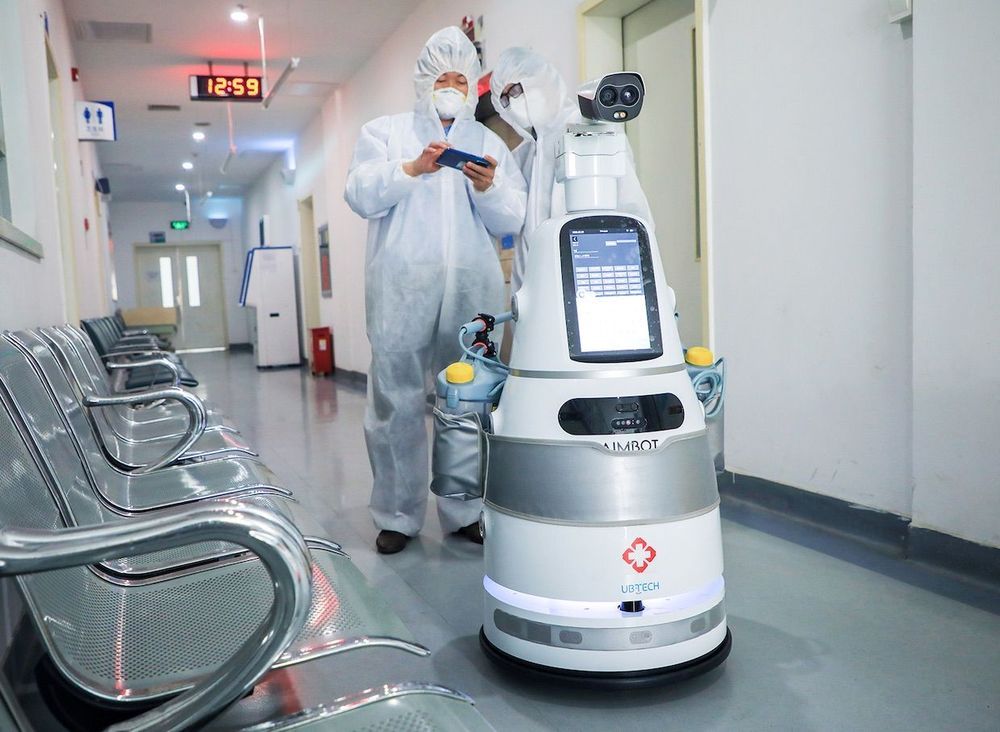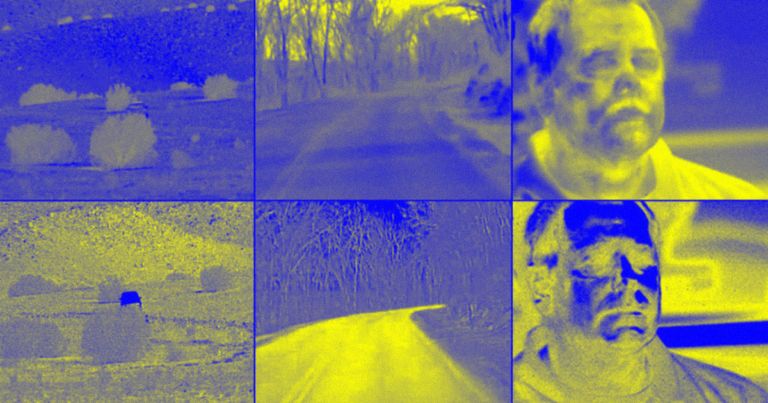This evacuation system can save 800 people from a sinking ship.
Get the latest international news and world events from around the world.


Robot designed in China could help save lives on medical frontline
SHANGHAI (Reuters) — Researchers at one of China’s top universities have designed a robot they say could help save lives on the frontline during the coronavirus outbreak.
The machine consists of a robotic arm on wheels that can perform ultrasounds, take mouth swabs and listen to sounds made by a patient’s organs, usually done with a stethoscope.
Such tasks are normally carried out by doctors in person. But with this robot, which is fitted with cameras, medical personnel do not need to be in the same room as the patient, and could even be in a different city.

Coronavirus Pandemic: A Call to Action for the Robotics Community
Medical robotics expert Guang-Zhong Yang calls for a global effort to develop new types of robots for fighting infectious diseases.
When I reached Professor Guang-Zhong Yang on the phone last week, he was cooped up in a hotel room in Shanghai, where he had self-isolated after returning from a trip abroad. I wanted to hear from Yang, a widely respected figure in the robotics community, about the role that robots are playing in fighting the coronavirus pandemic. He’d been monitoring the situation from his room over the previous week, and during that time his only visitors were a hotel employee, who took his temperature twice a day, and a small wheeled robot, which delivered his meals autonomously.
An IEEE Fellow and founding editor of the journal Science Robotics, Yang is the former director and co-founder of the Hamlyn Centre for Robotic Surgery at Imperial College London. More recently, he became the founding dean of the Institute of Medical Robotics at Shanghai Jiao Tong University, often called the MIT of China. Yang wants to build the new institute into a robotics powerhouse, recruiting 500 faculty members and graduate students over the next three years to explore areas like surgical and rehabilitation robots, image-guided systems, and precision mechatronics.
“I ran a lot of the operations for the institute from my hotel room using Zoom,” he told me.

Augmenting Your Immunity: Fighting COVID-19
#Interesting opinion from a #Futurist
Why do the young survive, and older individuals fall ill?
Likely because our immune systems degrade as we age. It’s the same reason that humans see increased cancer rates as we age— as we grow older, our immune systems, which normally find and destroy cancers in our bodies, become overwhelmed, exhausted, depleted.
As researchers are racing to develop vaccines and antiviral therapies to treat the COVID-19 pandemic, one promising option is immunotherapy. This technology uses components of our immune system to alter or boost a patient’s immune response. Immunotherapy has been used successfully to treat other viral diseases as well as cancer and diseases of the immune system.
COVID-19 pandemic prompts more robot usage worldwide
As the COVID-19 pandemic spreads, robots, drones, and AI are helping healthcare organizations respond to worker shortages and the risk of infection.

Army Developing Tech to ID Terrorists in the Dark From .5 KM Away
The super-charged face scanning tech is costing the military at least $4.3 million.
The United States Army is currently building a super-charged facial recognition system — tech that could be ready for action as soon as next year.
The system, as described in a new One Zero story, analyzes infrared images of a person’s face to see if they’re a match for anyone on a government watchlist, such as a known terrorist. Not only will the finished system reportedly work in the dark, through car windshields, and even in less-than-clear weather conditions — but it’ll also be able to ID individuals from up to 500 meters away.
Army Agreements
One Zero tracked down two military contracts for the development of the tech.

Scientists Call for Fusion Power Plant in the United States
Long Haul
There’s a lot that needs to happen before that pilot fusion plant gets built — if scientists had already conquered the challenges of practical nuclear fusion then the report wouldn’t have been necessary.
“This is the first time in a generation when the fusion community has been called upon to self-organize and figure out its highest priorities for getting from fusion science to fusion energy,” Bob Mungaard, CEO of Commonwealth Fusion Systems, said in the release. “How we can get ready, with data, experience, test facilities — the things that are needed to support the science, and eventually an industry.”
A Tesla Model S reaches 1 million km for first time
Circa 2019
A Tesla owner has put over 1 million km (621,000 miles) on a Model S for the first time and he explains his experience in a video interview.
Hansjörg Gemmingen from Germany is the maniac (with all due respect) who has put so much mileage on his 2013 Model S P85.
He considers driving a hobby and he has put 600 km a day on the car on average.

DARPA is Building a Robotic Space Mechanic to Fix Satellites in Orbit
DARPA, the Defense Advanced Research Projects Agency that’s responsible for developing emerging technologies for the U.S. military, is building a new high-tech spacecraft — and it’s armed. In an age of Space Force and burgeoning threats like hunter-killer satellites, this might not sound too surprising. But you’re misunderstanding. DARPA’s new spacecraft, currently “in the thick of it” when it comes to development, is armed. As in, it has arms. Like the ones you use for grabbing things.
Armed robots aren’t new. Mechanical robot arms are increasingly widespread here on Earth. Robot arms have been used to carry out complex surgery and flip burgers. Attached to undersea exploration vehicles, they’ve been used to probe submerged wrecks. They’ve been used to open doors, defuse bombs, and decommission nuclear power plants. They’re pretty darn versatile. But space is another matter entirely.